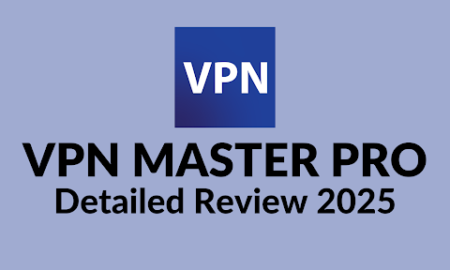Latest News
-

 2
2From Surgery to Stardom: Adam Arroyo Launches Media Empire After Beating the Odds
After surviving life-threatening blood clots, Adam Arroyo has built a sports media empire with 5B+ views and a viral online training brand...
-

 3
3Best IPTV Canada: The Ultimate Guide to IPTV Subscription in Canada (2025)
In 2025, television consumption by Canadians is fast changing, with IPTV being touted as the preferred option in place of conventional cable...
-

 5
5How Rajesh Kesavalalji’s Vision Fuels AI Software Innovation
Rajesh Kesavalalji, a leading software expert, is working on a high-priority project focused on reducing the high energy costs of AI. He...
-

 12
12Redefine Your Space: Buffet or Sideboard? Choosing the Perfect Dining Storage for UAE Homes
When you walk into a well-designed dining room, there’s often one piece that quietly commands attention. A beautifully crafted buffet or sideboard....
-

 10
10VPN Master Pro Review: A User’s Perspective on VPNMasterPro
In today’s digital landscape, online privacy and security are more critical than ever. With threats ranging from data breaches to intrusive tracking,...
-

 10
10A New Voice in Technical Clarity: Tackling Hidden Risks in Global Communication
Across the United States, industries reliant on complex technical documentation are facing a silent but costly challenge: language precision. As companies expand...
-

 7
73 Steps to Choose the Best Corporate Team Building Event
In today’s fast-paced corporate world, collaboration, communication, and cohesion are more critical than ever. Whether you’re a startup looking to strengthen bonds...
-

 8
8Team Building Malaysia: HRDC Claimable Options for All Budgets
Planning team building in Malaysia can be both exciting and overwhelming. Whether you’re an HR manager in a multinational corporation or a...
-

 9
9Why IPTV is Revolutionizing Television in France
The way we watch television has changed dramatically, and in France, French IPTV français is at the forefront of this transformation. Internet...
-

 10
10Reasons Why Everyone Should Join a Gym
Joining a gym can be a transformative decision, positively impacting various aspects of life. Whether you are a seasoned fitness enthusiast or...
-

 10
10The Timeless Appeal of the Brown Leather Jacket
When it comes to versatile outerwear that never goes out of style, the brown leather jacket is an undisputed classic. Whether you’re...
-

 10
10Choosing the Best Dash Cam Front and Rear for Safer Driving
Modern roads demand more awareness, accountability, and protection than ever before. Whether you’re a daily commuter, weekend traveler, or rideshare driver, a...
-

 10
10Why a Dual Dash Cam is a Smart Choice for Your Vehicle
In today’s fast-paced driving environment, having an extra layer of protection can make all the difference. From crowded roads to unexpected incidents,...
-

 11
11Recharge and Ride Consistent Waves at a Costa Rica Surf Camp
Costa Rica has become a destination synonymous with adventure, relaxation, and natural beauty. For surfers, this Central American paradise offers something even...
-

 11
11The Rise of Smart Cabinet Buyers: Why RTA Is No Longer a Compromise
The Shift Toward Smarter, More Empowered Renovators Renovating a kitchen used to come with a familiar sense of dread. Between budgeting, design...
-

 16
1630% Market Share, Triple the Surge! HSG Laser’s Dominance: A Slaughter of the Indian Laser Industry
The ‘Localization’ Trap Under Anti-Dumping Duty: HSG Laser’s Deepening Threat to Indian Industry Dear Colleagues in the Indian Laser Industry, Our industrial...
-

 14
14DIDDY TRIAL: Dr. Keshia Gaines Gives an Exclusive Interview About Her Experience Inside the Courtroom
SARGANI: Hello Dr. Gaines! We heard you attended the Sean “Diddy” Combs Trial on Day 14 and 15 in lower Manhattan. What...
-

 12
12Important things to remember when making your next nail gel purchase
There’s nothing like the feeling of knowing that the weekend is approaching or a big social occasion is getting closer. It might...




















